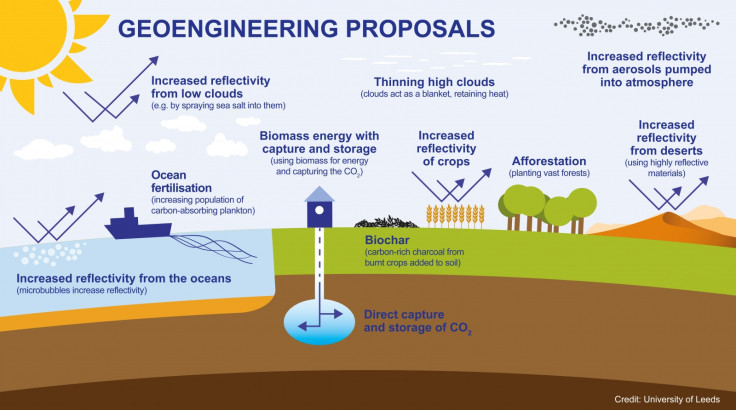Geo-engineering has High Costs and Low Benefits Conclude Three UK Studies
Three UK projects say geoengineering may not be a great way to fix the planet's climate.

Three UK projects - IAGP, led by the University of Leeds; SPICE, led by the University of Bristol; and CGG, led by the University of Oxford have concluded that geoengineering may not be a great way to fix the planet's climate.
In fact, they may prove to be costly propositions with limited benefits.
While cautioning that the extreme technologies that tinker with the ecosystem will not provide the quick fix, they also advocate a wait and watch approach as "not deploying some technologies at a point would be unethical".
The IAGP (Integrated Assessment of Geoengineering Proposals) took an interdisciplinary approach combining climate modelling, philosophy and engineering, besides public perceptions, in assessing geo-engineering. The CGG (Climate Geoengineering Governance) concentrated on the governance and regulatory challenges posed by research and deployment.
In climate modelling experiments, the IAGP created a virtual scenario of rescuing Arctic sea ice by dumping sulphur dioxide into the atmosphere from aircraft.
The challenges in monitoring and predicting the effects were highlighted. So also the fact that much is not understood about the interactions that play out in reality.
For instance, in simulating the spraying of sea salt particles into clouds to brighten them and reflect back sunlight into space, the team found that not all clouds behaved in the same way and often the particles tended to coagulate and fall out before reaching the cloud base.
Professor Piers Forster, Professor of Physical Climate Change at the University of Leeds, and the principal investigator of the IAGPproject, said, "Our research shows that the devil is in the detail. Geo-engineering will be much more expensive and challenging than previous estimates suggest and any benefits would be limited."
The SPICE (Stratospheric Particle Injection for Climate Engineering) researchers used volcanoes as models to mimic the effect in a proposal that saw sulphate aerosols pumped into the atmosphere to reflect more sunlight back into space.
Dr Matthew Watson, a reader in natural hazards from the University of Bristol, and principal investigator for the SPICE project, said: "Whilst it is clear that temperatures could be reduced during deployment, the potential for misstep is considerable. By identifying risks, we hope to contribute to the evidence base around geoengineering that will determine whether deployment, in the face of the threat of climate change, has the capacity to do more good than harm."
The CGG research showed how technically easy and quick impact geo-engineering proposals could be the most difficult to govern, and vice versa.
Public perception that geo-engineering involves "messing with nature" was recognised following four public workshops held in Birmingham, Cardiff, Glasgow and Norwich, and two stakeholder workshops in London, with representation from national government departments, civil society groups and industry.
Climate change mitigation strategies, such as improving energy efficiency measures and scaling up renewable technologies, were preferred to geo-engineering proposals.
Proponents of geo-engineering have been arguing about the need for carrying more tests to understand the dynamics of the system. There have been counter claims that such experiments would have to be conducted at large scale, causing unintended and unknown consequences.
The larger argument has been that geo-engineering offers a way out of the mess we create, encouraging nations not to address climate change mitigation measures.
Studies have been demonstrating a way out by using clean and efficient technologies, which come with an initial cost but have long-term benefits.
© Copyright IBTimes 2025. All rights reserved.





















